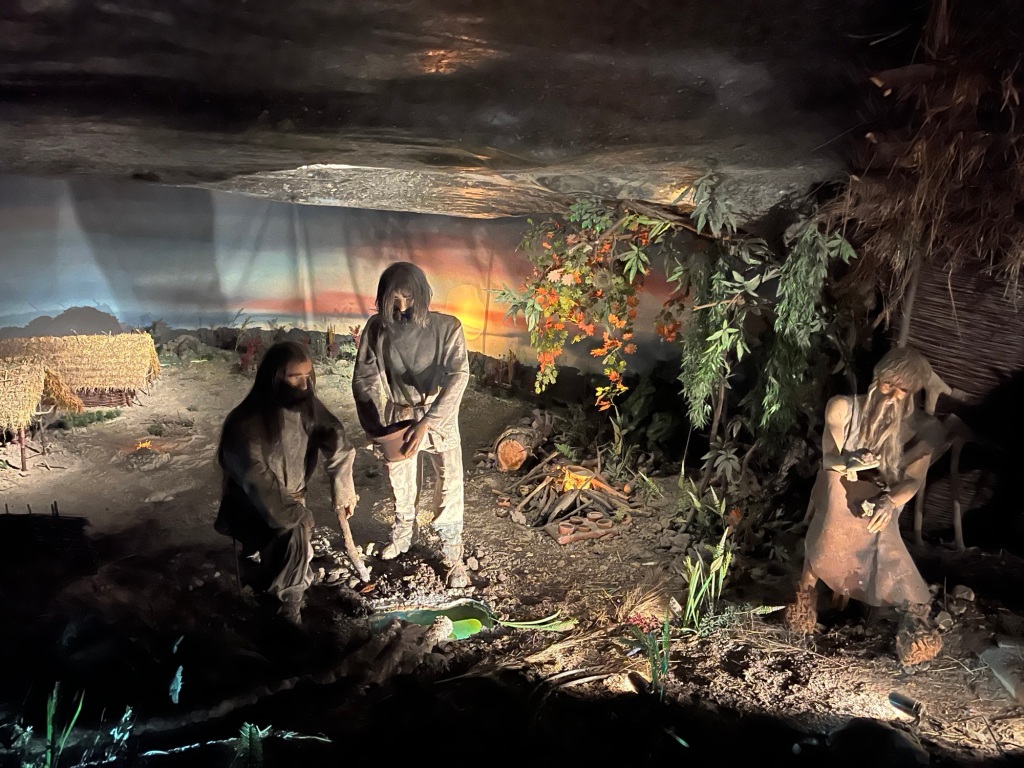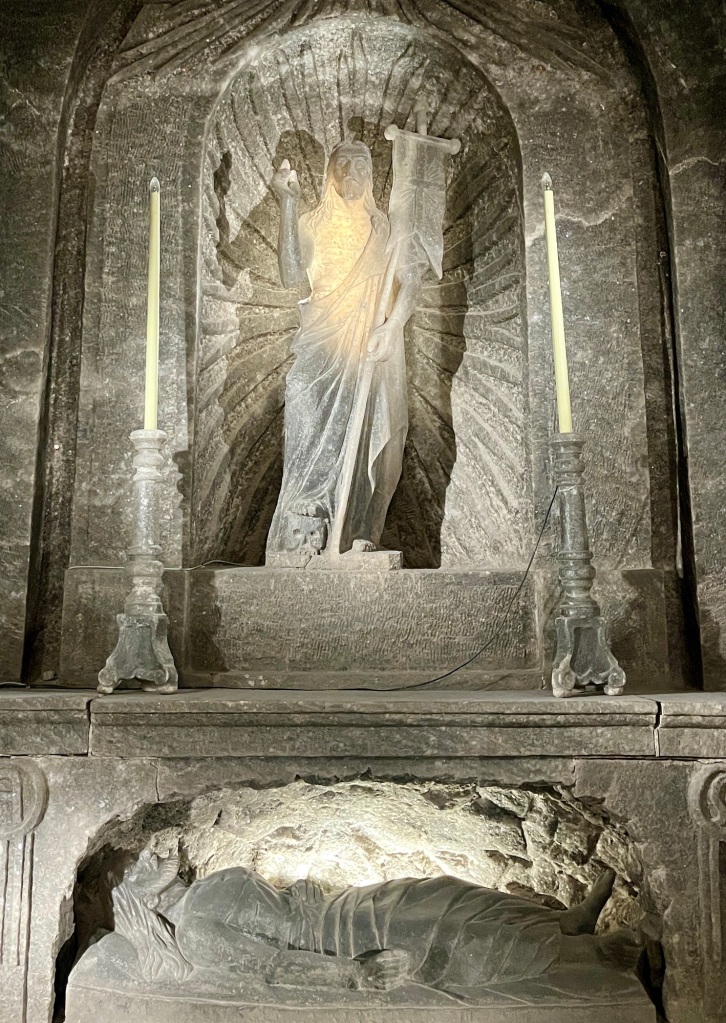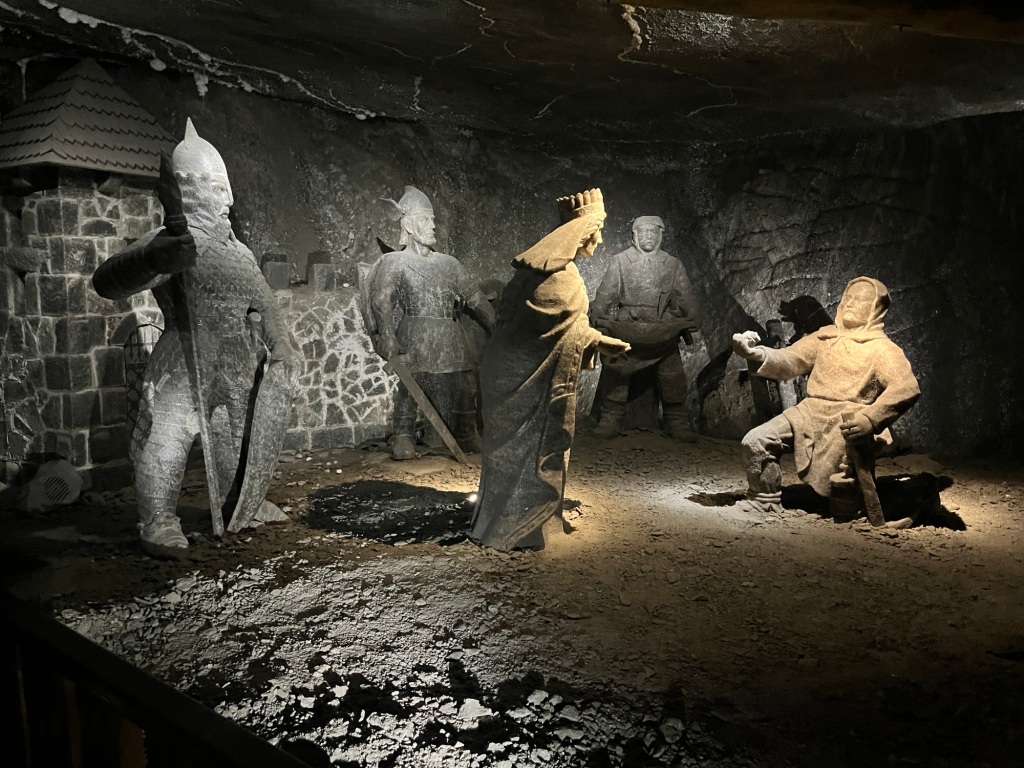
Today Roy, Jimmy and I participated in a three-hour group tour of the Wieliczka salt mine. I was skeptical about what could possibly be of interest to me until I realized the value of salt during the period of time when refrigeration of food was nonexistent.
For a most interesting read on the complete history of the largest salt mine in Poland, visit the website. https://www.wieliczka-saltmine.com/individual-tourist/about-the-mine/history-of-the-mine.
From the website: “Dating back to Neolithic times, the secret of evaporated salt production was passed down from generation to generation – and the people involved were a specialized professional group.
The salt obtained served as a preservative for meat and fish, and with time it became a means of payment in trade with those who did not have access to salt.

Initially, salt water was collected from surface springs and reduced to a solid via boiling, until the 12th century, when subterranean deposits of the raw material in vast quantities was discovered.
The secret of evaporated salt production was passed down from generation to generation – and the people involved were a specialized professional group. The salt obtained served as a preservative for meat and fish, and with time it became a means of payment in trade with those who did have access to salt.
In the 14th century, king Casimir III had a highly successful period of rule, partially due to revenue from salt extraction, which constituted as much as 1/3 of the royal treasury’s income. In truth, rock salt was worth as much as silver and gold.
During the end of the Middle Ages, 300–350 people worked in Wieliczka, with annual production of salt reaching 7000 –8000 tons. Mining was seasonal in the months when no agricultural work was carried out.
In the 16th to 18th centuries the mine moved to a year-round working schedule. Rock salt was not the only main source of income at that time. A large amount of salt was also produced in saltworks on the surface, where brine was evaporated in special pan furnaces. Eventually a shortage of firewood occurred, which led to import . When that became difficult , salt water was simply transported even to very distant cities, to convert brine into salt there. The lack of lumber also made it difficult for the miners to work because they could not build box cribs, the wooden structures that secured the underground workings. In the early 1700’s salt evaporation was abandoned and only mining methods prevailed.
The tour turned out to be highly interesting. I have a history of exploring caves, dating back to my experiences at the University of Massachusetts outing club. We initially descended wooden stairways until we reached a level that was 435 feet deep.
Here we began to explore a variety of excavations that resulted in rooms of various sizes populated with master carvings of various types of artistic architectural displays.


In 1996 a decision was made to end industrial salt production in Wieliczka. Since 1976, the underground Wieliczka has been listed in the register of monuments, and in 1994, it was declared a national Historic Monument by the President of the Republic of Poland.

Follow on Instagram
https://www.instagram.com/wieliczkasaltmine?igsh=MWoyNGpwOWhhN3kzaA==
